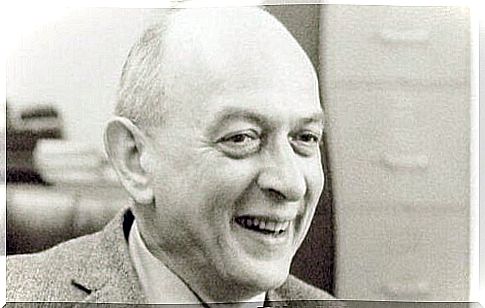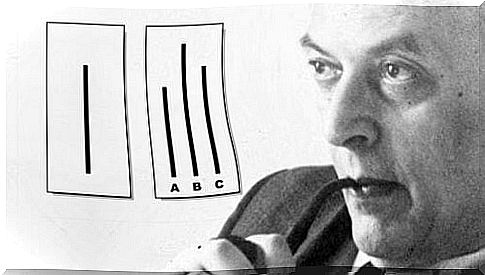Solomon Asch: A Pioneer Of Social Psychology

Many experts consider Solomon Asch to be one of the pioneers of social psychology. In this article we talk about his life and contributions.
He was born in 1907 in Warsaw, Poland. However, when he was thirteen years old, his family moved to New York. There Solomon Asch completed his studies, after which he obtained his doctorate in 1932.
Over time, he gained recognition for his original social psychology experiments. In particular , he tried to show how much influence others can have on one ‘s behavior.
While studying at Columbia University, Solomon Asch was also a student of Max Wertheimer. This expert in the field of Gestalt psychology was very influential on him. Thanks to him, Asch became interested in phenomena such as perception, thoughts and association.
The Intellectual Development of Solomon Asch
Asch spent 19 years as a psychology professor at Swarthmore College. During this time , he built a strong relationship with Wolfgang Kohler, a man he always admired.
It was his theories in particular that sparked his interest in doing research. In addition, they served as the basis for his experiments. Asch became very famous for his experiments and his 1952 book Social Psychology .
He revolutionized the studies of the human mind. He also worked at the Massachusetts Institute of Technology (MIT) and the University of Pennsylvania. He also spent a short period at Harvard University, where he supervised the dissertation of the famous and controversial Stanley Milgram.

Asch .’s Agreement Experiments
In 1951, Solomon Asch conducted a series of experiments known as “Asch’s agreement experiments.” The main purpose of these experiments was to prove that people gave in to a group.
One of his experiments involved forming a group of seven to nine students. All but one were accomplices to the investigators. The researchers showed the students two lines. They then asked the students to indicate which line was longer. The correct answer was very clear.
However, some of the students who were aware of the study deliberately chose the wrong option. This put a lot of pressure on the student who was unaware of the study. As a result, this student eventually decided to go with the group and thus go against his own logic.
Solomon Asch showed that many of the subjects eventually decided to go with the majority’s answers, even though they were clearly wrong. This made Asch wonder whether these subjects were doing this because they were truly convinced of their answers. The answer to this question was no.
He found that many of the people who had agreed with the majority’s answer changed their answer when asked again in private. The peer pressure thus acted on their conscience, not on their judgment.
Other aspects of Asch .’s agreement experiments
In addition to the main research, Solomon Asch introduced some variations. One was that he introduced a person to the group (also an accomplice) who went against the majority consensus.
Asch found that the presence of this person drastically reduced the number of subjects who joined the majority opinion against their better judgement.

Asch’s experiments, although criticized, gave a different and original perspective on how a group can influence and condition us. Because of this, many people consider him one of the most important psychologists in history.








